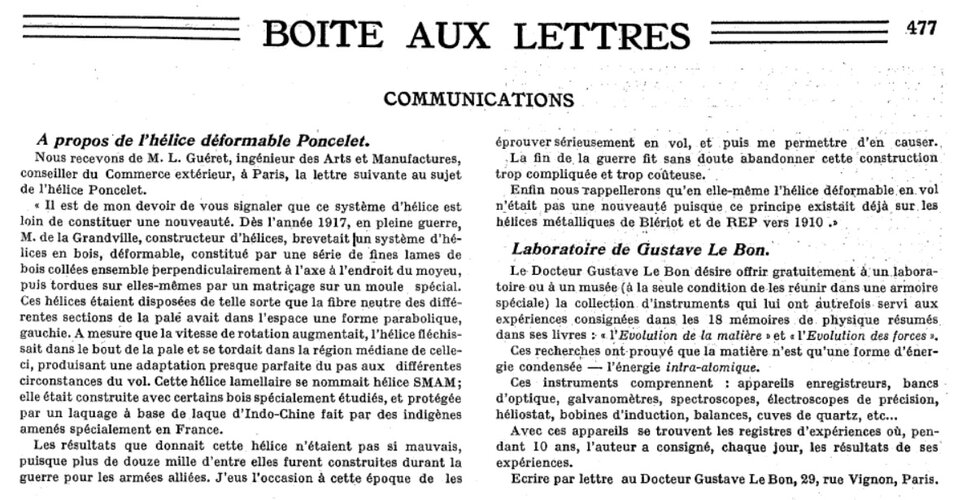- Joined
- 25 June 2014
- Messages
- 1,564
- Reaction score
- 1,453
The advantages of the variable-pitch propeller were recognised early on, and experiments began somewhere around the start of WWI. But the engineering proved a formidable challenge.
By 1925, in the UK Dr. Hele-Shaw and T. E. Beacham were developing a viable hydraulic actuation mechanism. The next year, Gloster Aircraft acquired the rights to their Hele-Shaw Beacham propellers. Prototypes demonstrated their potential, but the engine industry preferred to sell bigger, overpowered and more expensive (i.e. profitable) solutions. Only Japanese company Okura bought a license, in 1928.
In 1929 two significant events happened. One was the arrival of Ministry interest and trial orders at last, the other was the moment when Tom Hamilton visited the Gloster stand at that year's International Aero Exhibition at Olympia and, on seeing a propeller on display there, promptly visited the Gloster works. His company's US patent for the two-position propeller was lodged shortly afterwards; a few years later, de Havilland would license it back from him.
All this from Derek N. James; Gloster Aircraft Since 1917, Putnam, 1971, pp.16-7.
But the timing reported by James is somewhat invidious. The Seventh International Aero Exhibition ran from 16 to 27 July 2029. However US Patent 1,893,612 had already been filed on 25 May, 1929. Hamilton lodged their British application in 1930, UK Patent 355329A being granted in August of the next year, the timing of which may have misled James into believing it set the date of invention. Or was James perhaps referring to a subsequent Hamilton patent which adopted Hele-Shaw Beacham technology?
Either way, it seems that Hamilton and Hele-Shaw/Beacham were working in parallel along similar lines. One wonders who knew what about each other's work.
And here's another odd thing. Gloster continued to manufacture Hele-Shaw Beacham propellers for their own aircraft, and sold them elsewhere too; eventually the propeller business would morph into Rotol. But when in 1934 de Havilland sought a V-P prop for the nascent DH 88 Comet Racer, there is no record of them looking to their compatriots, only to the US and France. Why ever not?
By 1925, in the UK Dr. Hele-Shaw and T. E. Beacham were developing a viable hydraulic actuation mechanism. The next year, Gloster Aircraft acquired the rights to their Hele-Shaw Beacham propellers. Prototypes demonstrated their potential, but the engine industry preferred to sell bigger, overpowered and more expensive (i.e. profitable) solutions. Only Japanese company Okura bought a license, in 1928.
In 1929 two significant events happened. One was the arrival of Ministry interest and trial orders at last, the other was the moment when Tom Hamilton visited the Gloster stand at that year's International Aero Exhibition at Olympia and, on seeing a propeller on display there, promptly visited the Gloster works. His company's US patent for the two-position propeller was lodged shortly afterwards; a few years later, de Havilland would license it back from him.
All this from Derek N. James; Gloster Aircraft Since 1917, Putnam, 1971, pp.16-7.
But the timing reported by James is somewhat invidious. The Seventh International Aero Exhibition ran from 16 to 27 July 2029. However US Patent 1,893,612 had already been filed on 25 May, 1929. Hamilton lodged their British application in 1930, UK Patent 355329A being granted in August of the next year, the timing of which may have misled James into believing it set the date of invention. Or was James perhaps referring to a subsequent Hamilton patent which adopted Hele-Shaw Beacham technology?
Either way, it seems that Hamilton and Hele-Shaw/Beacham were working in parallel along similar lines. One wonders who knew what about each other's work.
And here's another odd thing. Gloster continued to manufacture Hele-Shaw Beacham propellers for their own aircraft, and sold them elsewhere too; eventually the propeller business would morph into Rotol. But when in 1934 de Havilland sought a V-P prop for the nascent DH 88 Comet Racer, there is no record of them looking to their compatriots, only to the US and France. Why ever not?
Last edited:

